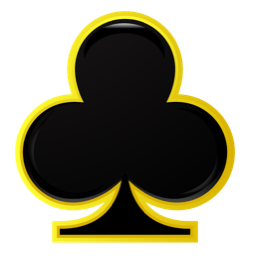Controlling Emotions at the Poker Table

We are all card sharps in the game of poker. The cards represent the choices we make in life, and the table is the stage on which our successes and failures are played out. Across the felt, we must make decisions that are both calculated and daring, blending psychology and strategy to navigate the highs and lows of the game. In this article, we explore the psychology of poker and how it can help us make the best moves.
The Mental Game
The mental game is an essential part of poker, as it can determine the outcome of a hand. To be successful, players must be able to focus, remain disciplined, and resist the urge to overplay. It’s important to be able to recognize patterns and analyze situations in order to make the best decisions. The ability to think several steps ahead is also crucial.
It’s not just about being smart, either. Players must also have emotional control in order to stay calm and not make rash decisions. Tilting and letting emotions get the best of them can easily lead to costly mistakes. To maintain a steady mental state, it helps to take breaks, practice self-care, and recognize when it’s time to stop playing. Moving on to the next section, it’s clear that emotional control is an integral part of successful poker.
Tilt and Emotional Control
You’ve likely experienced the frustration of tilt, or letting your emotions take control of your poker game. Tilt can quickly ruin a game, so understanding it and learning how to keep it in check is essential to becoming a successful poker player. Here are 5 tips for controlling tilt:
- Recognize when you’re feeling emotional and take a break
- Don’t take it personally; mistakes happen
- Don’t dwell on losses; focus on the future
- Remember why you’re playing; focus on the joy
- Don’t let your game be dictated by your emotions
Optimizing Your Play
Optimizing your play is key to becoming a successful poker player, and it requires more than just controlling your emotions. It’s important to recognize what type of game you’re playing and to have a strategy that takes into account the type of players at the table. Knowing when to fold, when to bluff, and when to call are all parts of the game that need to be mastered. Additionally, it’s important to be aware of the table image you create and how it impacts the other players’ decisions. Being aware of the dynamics at the table can help you make the most of any situation. All these elements work together to make a good poker player. To be successful, you need to be able to master all of them. Making the decision to optimize your play is the first step to becoming a winning poker player. Now it’s time to focus on understanding table image and player types.
Table Image and Player Types
Understanding the table image you create and the different types of players at the table can help you maximize your success in poker. It’s important to know how your opponents perceive you, what kind of player they think you are, and how they’ll react to your strategies. It’s also important to identify the different types of players, from tight-aggressive to loose-passive, and adjust your play accordingly. Knowing how to build a good table image and identify the different types of players gives you the edge in the long run. So, get to know the players, build the right table image, and you’ll be well on your way to becoming a great poker player. Now, let’s look at adapting to change and taking risks.
Adapting to Change and Taking Risks
If you’re serious about poker, you’ve got to learn to adapt to changing situations and take calculated risks. It’s essential to remain flexible and be willing to adjust your strategy as needed. Here are four ways to do just that:
- Evaluate opponents’ reactions.
- Analyze game boards and consider all possibilities.
- Take chances when appropriate, but don’t be reckless.
- Push your boundaries to stay ahead of the competition.
Successful poker players know when to be daring and when to hang back. They’re able to think quickly and make calculated decisions. Ultimately, it’s about understanding your own strengths and weaknesses, and using them to your advantage. Let go of the fear of failure and embrace the freedom of taking risks.
We’ve learned a lot about the psychology behind poker – from understanding tilt and emotional control to optimizing our own play and adapting to changing situations. It’s important to remember that poker isn’t just about the cards you’re dealt, it’s about the game within the game. As the saying goes, “A good poker player knows when to hold ’em and when to fold ’em” – but a great poker player knows when to bluff and when to call. With the right amount of knowledge and practice, anybody can learn to become a master of the mental game.
